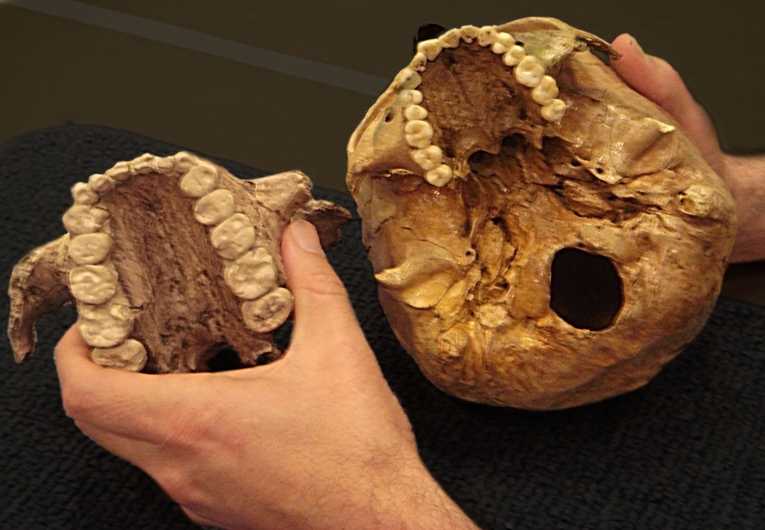New research has left 'Paranthropus boisei' - a species of human-like primates with powerful jaws ideal for chomping down on nuts – looking for a new nickname. The paper, which appears in Proceedings of the National Academy of Sciences yesterday, shows nuts were firmly off the menu for 'Nutcracker Man'. Instead it looks like one of our ancient hominid cousins was more of a grazer than a cracker of nuts.
The hominid in question was first described following the discovery of part of a skull by Mary and Louis Leaky, in 1959 in Tanzania. This human-related primate was an upright forager that roamed a wide area of East Africa 1 to 2 million years ago. That is the same time as other hominid groups that gave rise to man. Early analysis of Paranthropus boisei's flat broad teeth reinforced the suggestion of a preference for nuts.
Now researchers from the Universities of Utah and Colorado, together with a team from the University of Kenya, have been able to more precisely pin down the extinct hominid's diet. This was done using carbon isotope analysis in the tooth enamel - the tooth's surface holds a memory of the type of diet being chewed on.
The carbon that gets lodged in the enamel can be split between two groups - C3 plants that are adapted for cooler season photosynthesis, including trees (and nuts), shrubs and some grasses; and C4 plants, better suited to warm seasons, which includes tropical grasses and sedges. After looking at minute samples of finely ground tooth enamel, the study confirmed a complete absence of C3 plants.
Instead, Paranthropus boisei's diet was heavily slanted towards C4-types of sedges and tropical grasses. The only ape with a comparable diet are species of grass-eating baboons. That matched the results from the other aspect of the study - a thorough micro-analysis of the wear marks on 24 Paranthropus teeth. It seems that this long-lost cousin needed to graze on vast quantities of grains from sedges and grasses - hence the broad flat teeth and strong jaws.
Co-author Kevin Uno said ''This study provides evidence that Paranthropus boisei was not cracking nuts, but was instead eating mainly tropical grasses or sedges. It was not competing for food with most other primates, who ate fruits, leaves and nuts; but with grazers – zebras' ancestors, suids [ancestors of pigs and warthogs] and hippos.''
It also raises the possibility that the diets of other human ancestors may been on the wrong track. A reanalysis, taking into account the results from carbon isotope studies, may be in order. As co-author Professor Sponheimer said ''Frankly, we didn't expect to find the primate equivalent of a cow dangling from a remote twig of our family tree.''
Image Credit: Melissa Lutz Blouin, University of Arkansas. Image Caption: This photo of casts of two palates demonstrates the large size of the teeth of Paranthropus boisei (left), an early human relative that lived in East Africa between 2.3 million and 1.2 million years ago and was known as Nutcracker Man. Much smaller teeth from a human skull are shown on the right. A new study led by University of Utah researchers shows that Nutcracker Man didn't eat nuts as had been believed for decades, but instead used the large, flat teeth to chew grasses or plants known as sedges.










